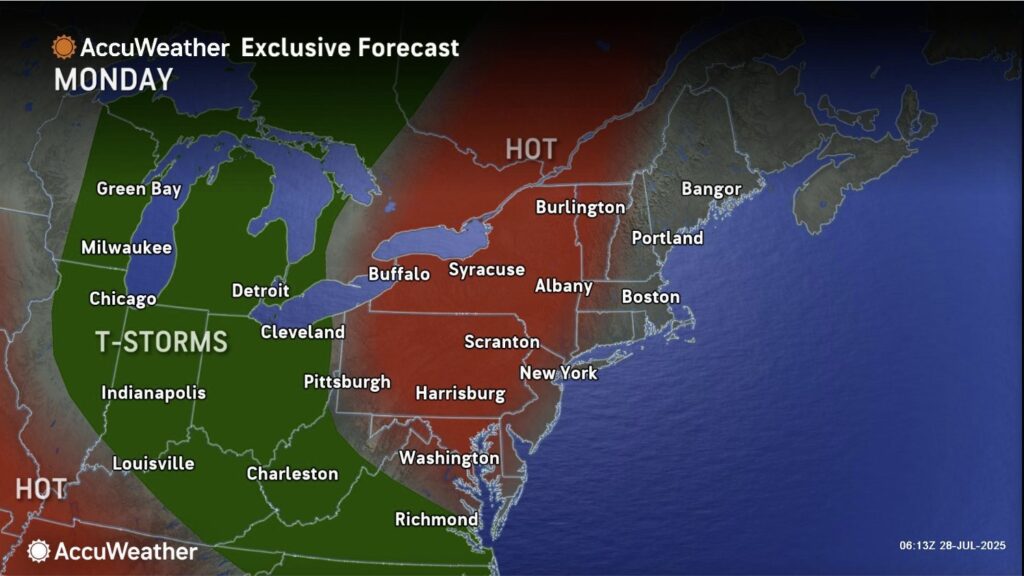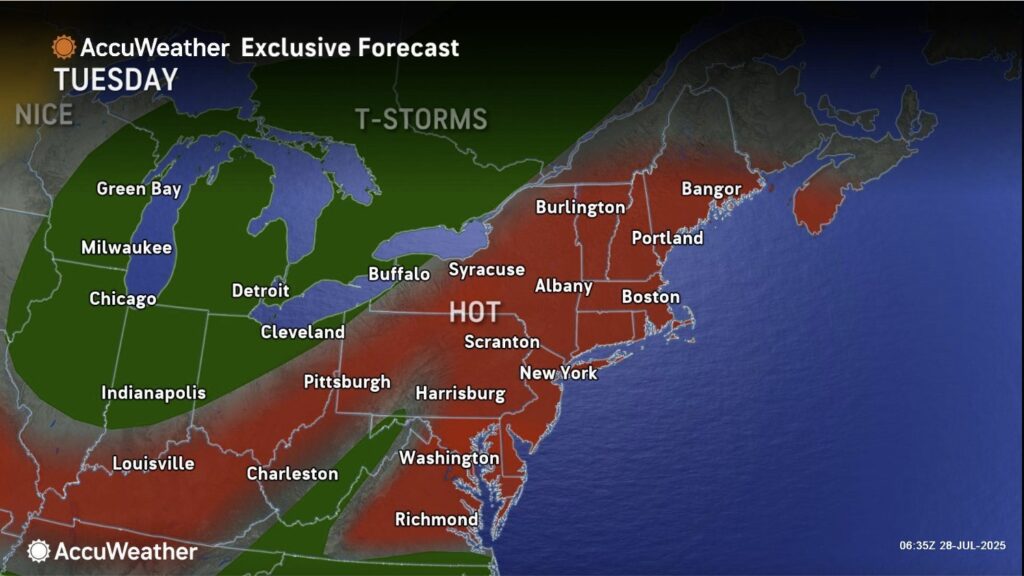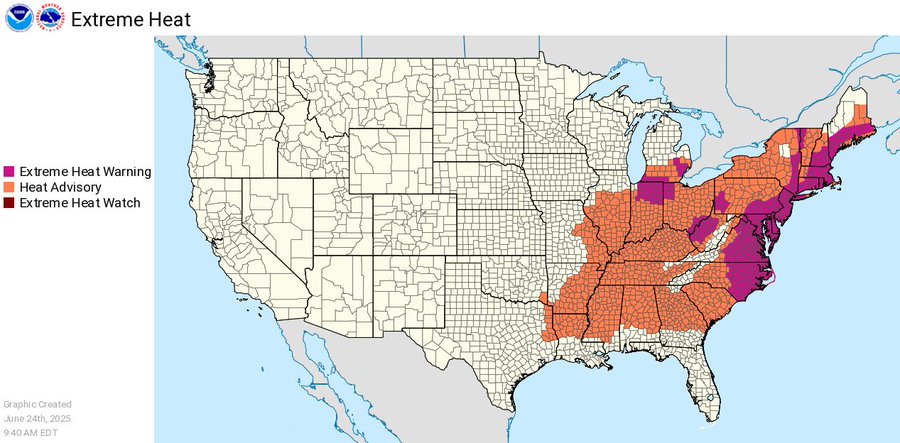
Extreme Heatwave Prompts Widespread Heat Advisory Warnings in the U.S.
As record-breaking temperatures sweep across the United States this week, the National Weather Service (NWS) has issued a heat advisory for over 15 states, affecting millions of Americans. From California to New York, cities are experiencing dangerous levels of heat and humidity, prompting warnings, school adjustments, and emergency measures.
The heat advisory comes as part of a growing pattern of extreme weather events being recorded in 2025, driven in part by climate change and shifting global temperatures. With highs reaching up to 110°F (43°C) in some areas, health officials are urging residents to take the advisory seriously.
What is a Heat Advisory?
A heat advisory is an official alert issued when temperatures are expected to reach levels that can cause heat-related illnesses if precautions are not taken. This typically means heat index values (a combination of temperature and humidity) are forecasted to reach at least 100°F to 105°F or more for a sustained period.
According to the NWS, a heat advisory is meant to raise awareness and encourage individuals, especially vulnerable groups like the elderly, children, and those with medical conditions, to stay cool and hydrated.
Areas Affected by the Heat Advisory
As of July 27, 2025, the following states are under an active heat advisory:
- California
- Texas
- Arizona
- Nevada
- Florida
- Louisiana
- Mississippi
- Georgia
- South Carolina
- Illinois
- New York
- Pennsylvania
- New Jersey
- Tennessee
- Oklahoma
Major cities such as Los Angeles, Phoenix, Houston, Miami, and New York City are experiencing consecutive days of dangerously high temperatures. Local governments have activated cooling centers and extended pool hours as part of their heat advisory response plans.

Health Risks During a Heat Advisory
A heat advisory isn’t just a weather note—it signals serious health dangers. When exposed to extreme heat, especially during the hottest parts of the day (11 a.m. to 5 p.m.), people face increased risk of:
- Heatstroke
- Heat exhaustion
- Dehydration
- Sunburn
- Respiratory distress in asthma patients
Medical experts are urging the public to follow these heat advisory safety tips:

- Stay indoors, especially during midday.
- Drink plenty of water, even if you’re not thirsty.
- Avoid strenuous outdoor activities.
- Wear loose, light-colored clothing.
- Check on elderly neighbors and pets.
- Use air conditioning or visit public cooling centers.
Impact of the Heat Advisory on Daily Life
With the heat advisory in effect, schools in several districts have canceled outdoor activities or moved summer programs indoors. Some cities have even altered public transportation schedules to ensure worker safety.
In Phoenix, Arizona—currently one of the hottest cities in the U.S.—the heat advisory has led to a 30% increase in emergency room visits related to heat exhaustion. Meanwhile, California’s power grid is under strain as millions turn up their ACs, prompting officials to urge energy conservation.
Local businesses are also feeling the heat. Construction projects, agricultural operations, and outdoor events have been delayed or modified in response to the heat advisory. Cities like Dallas and Las Vegas have deployed hydration stations and mobile medical units for the homeless population, which is especially at risk.
Climate Experts Warn More Frequent Heat Advisories Ahead
Climate scientists warn that such heat advisories are likely to become more common as the planet continues to warm. A recent study from NOAA shows that the U.S. is now experiencing three times as many heat advisories annually compared to 30 years ago.
Dr. Elena Martin, a climate expert at the University of Chicago, stated:
“This year’s widespread heat advisory events are not anomalies. They are part of a growing trend. Without significant changes in environmental policy and global emissions, these events could become the norm by 2030.”
How to Stay Informed During a Heat Advisory
To stay safe, residents are encouraged to monitor real-time weather updates from trusted sources:
- The National Weather Service (weather.gov)
- Local news channels and weather apps
- Emergency alert systems and text notifications
Signing up for local emergency alerts can ensure you receive the latest heat advisory notices for your area.
Conclusion: Responding to the Heat Advisory Is Critical
With millions affected by the ongoing heat advisory, public awareness and quick action are crucial. While summer heat is normal, the intensity and duration of current temperatures make this event extraordinary. Taking even basic precautions like staying hydrated, avoiding direct sun exposure, and checking in on loved ones can make a life-saving difference.
As more heat advisory alerts are issued in the coming days, officials urge the public to treat them seriously and act accordingly. The summer of 2025 is a stark reminder that nature’s power must be respected—and prepared for.
Heat Advisory
Millions affected as the National Weather Service issues a heat advisory across multiple U.S. states. Learn what a heat advisory means, who’s at risk, and how to stay safe during this extreme weather event.

